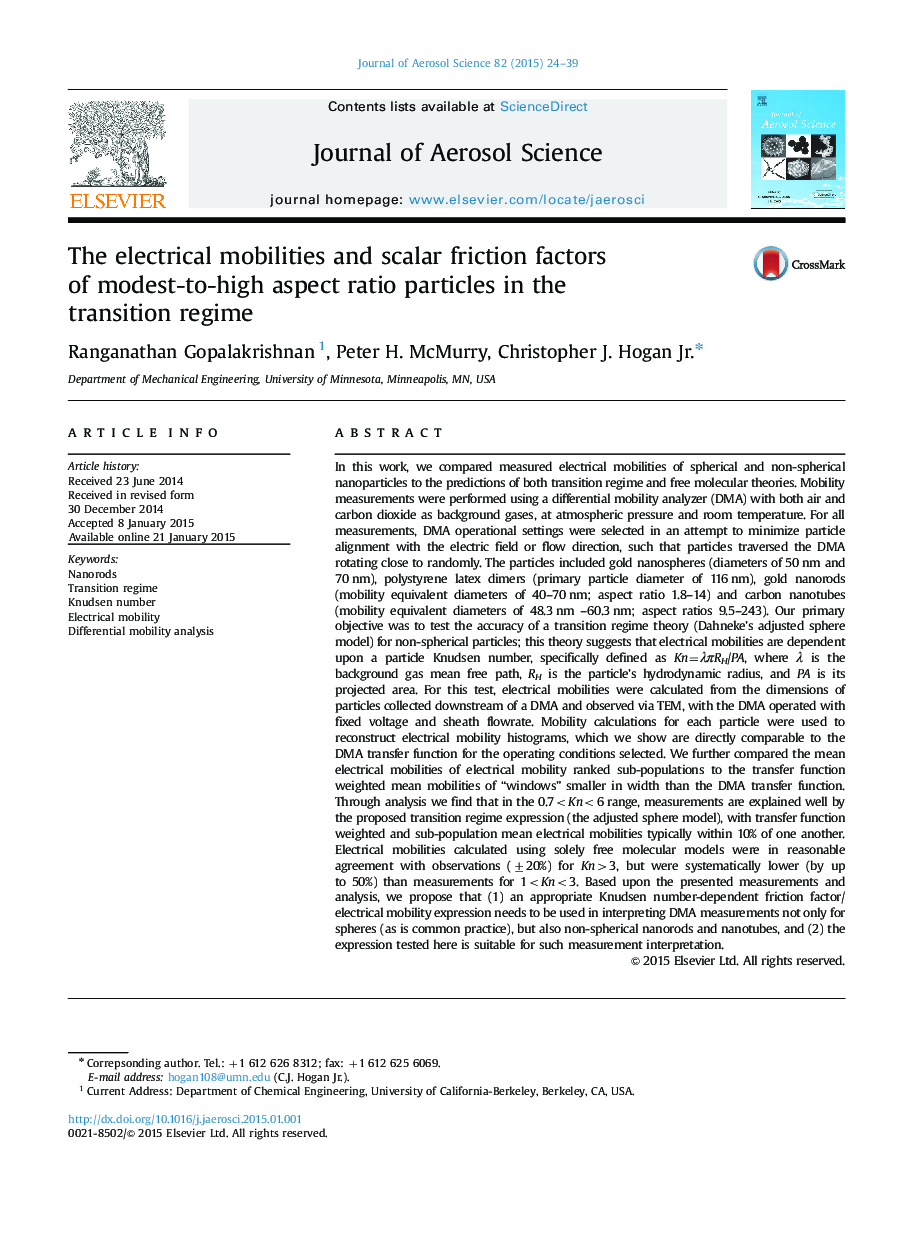| Article ID | Journal | Published Year | Pages | File Type |
|---|---|---|---|---|
| 6344484 | Journal of Aerosol Science | 2015 | 16 Pages |
Abstract
In this work, we compared measured electrical mobilities of spherical and non-spherical nanoparticles to the predictions of both transition regime and free molecular theories. Mobility measurements were performed using a differential mobility analyzer (DMA) with both air and carbon dioxide as background gases, at atmospheric pressure and room temperature. For all measurements, DMA operational settings were selected in an attempt to minimize particle alignment with the electric field or flow direction, such that particles traversed the DMA rotating close to randomly. The particles included gold nanospheres (diameters of 50 nm and 70 nm), polystyrene latex dimers (primary particle diameter of 116 nm), gold nanorods (mobility equivalent diameters of 40-70 nm; aspect ratio 1.8-14) and carbon nanotubes (mobility equivalent diameters of 48.3 nm -60.3 nm; aspect ratios 9.5-243). Our primary objective was to test the accuracy of a transition regime theory (Dahneke's adjusted sphere model) for non-spherical particles; this theory suggests that electrical mobilities are dependent upon a particle Knudsen number, specifically defined as Kn=λÏRH/PA, where λ is the background gas mean free path, RH is the particle's hydrodynamic radius, and PA is its projected area. For this test, electrical mobilities were calculated from the dimensions of particles collected downstream of a DMA and observed via TEM, with the DMA operated with fixed voltage and sheath flowrate. Mobility calculations for each particle were used to reconstruct electrical mobility histograms, which we show are directly comparable to the DMA transfer function for the operating conditions selected. We further compared the mean electrical mobilities of electrical mobility ranked sub-populations to the transfer function weighted mean mobilities of “windows” smaller in width than the DMA transfer function. Through analysis we find that in the 0.73, but were systematically lower (by up to 50%) than measurements for 1
Related Topics
Physical Sciences and Engineering
Earth and Planetary Sciences
Atmospheric Science
Authors
Ranganathan Gopalakrishnan, Peter H. McMurry, Christopher J. Jr.,
